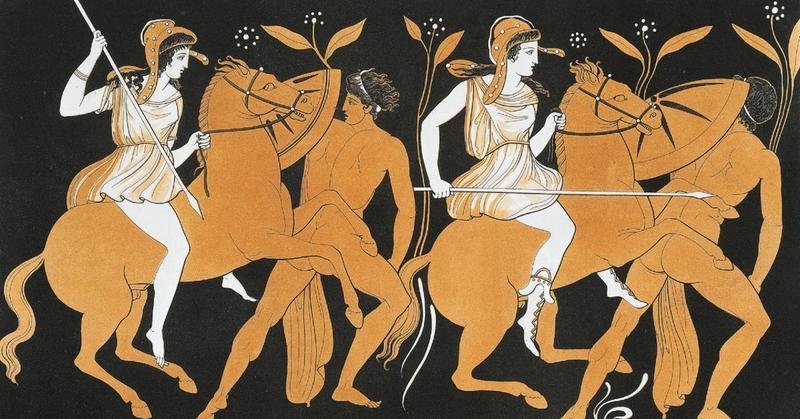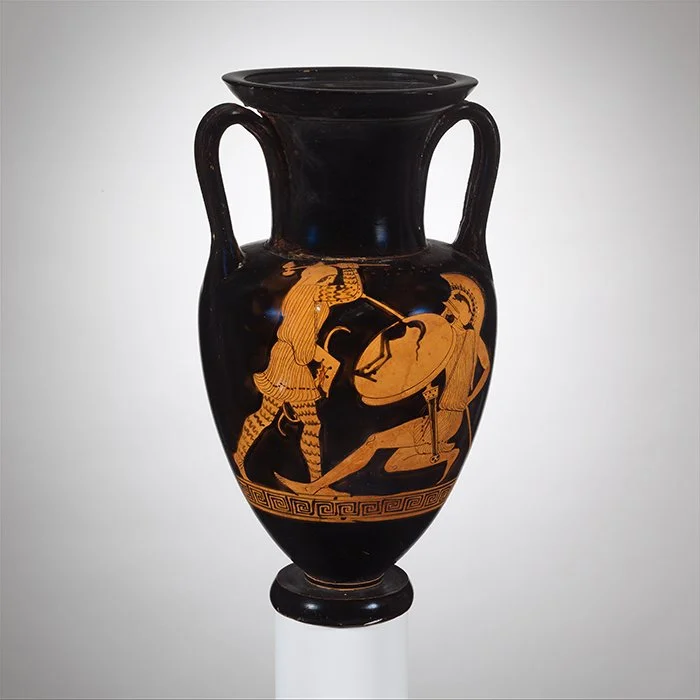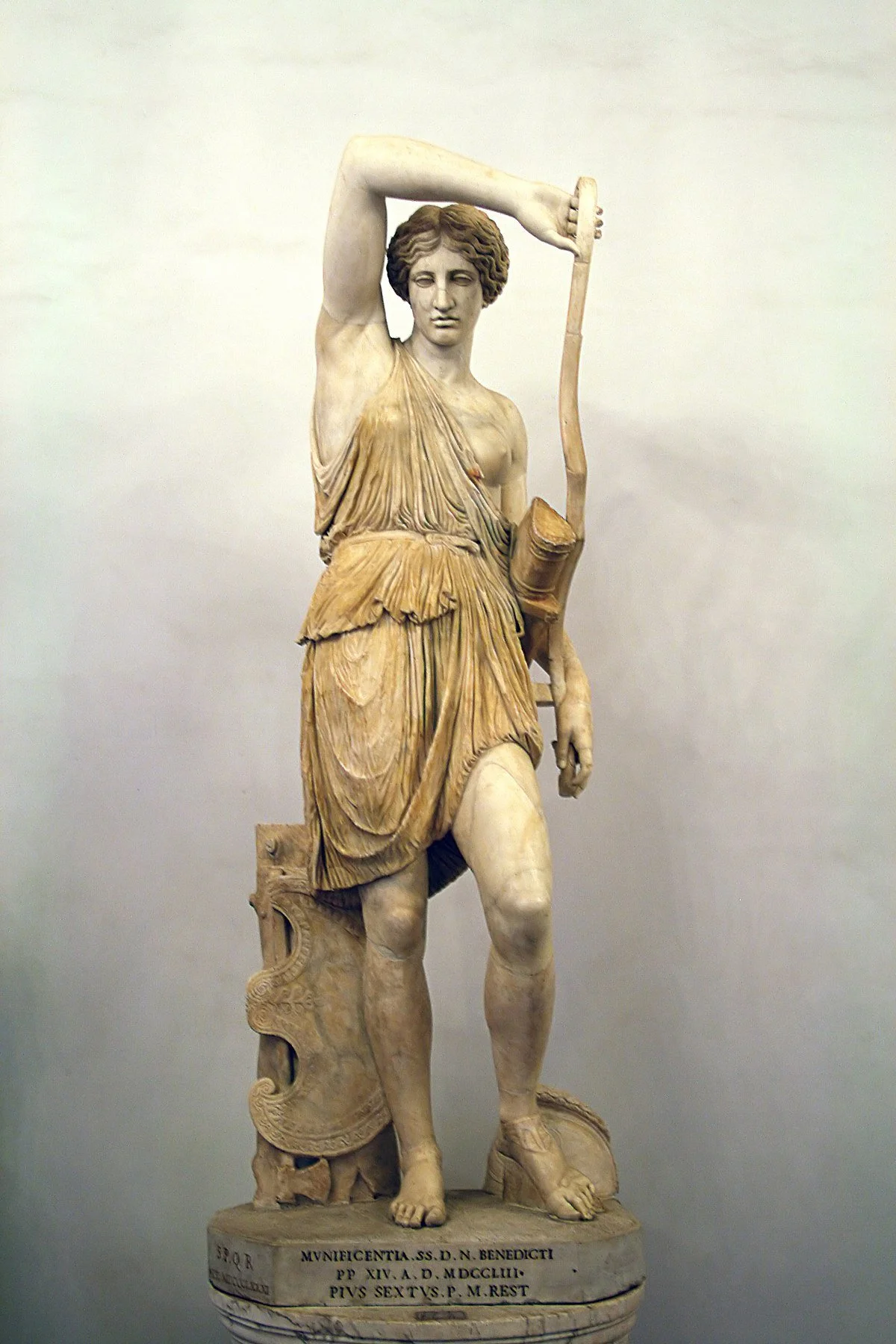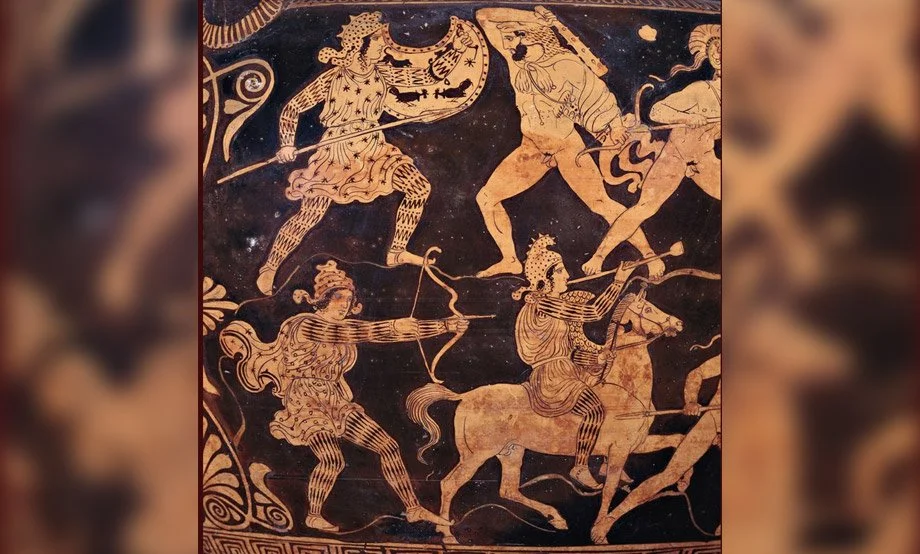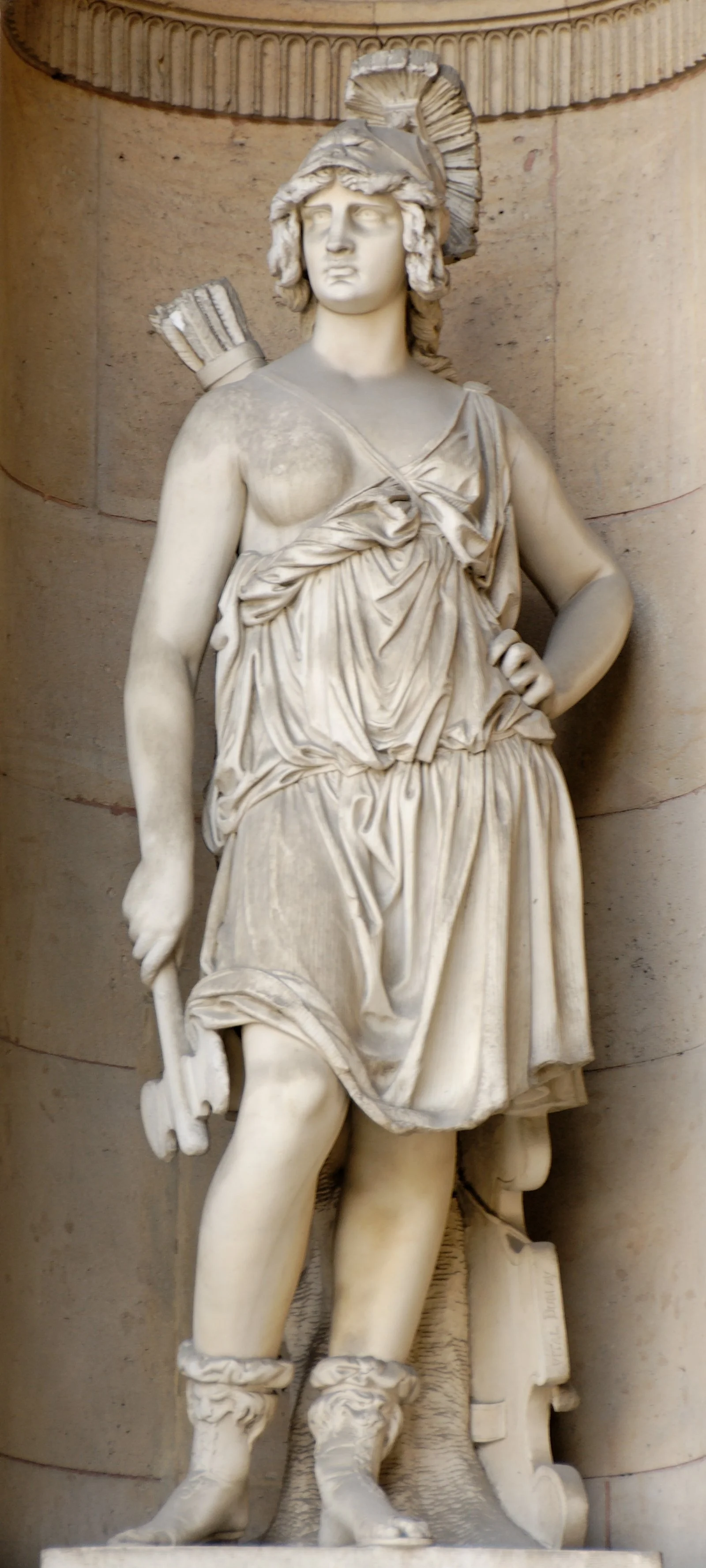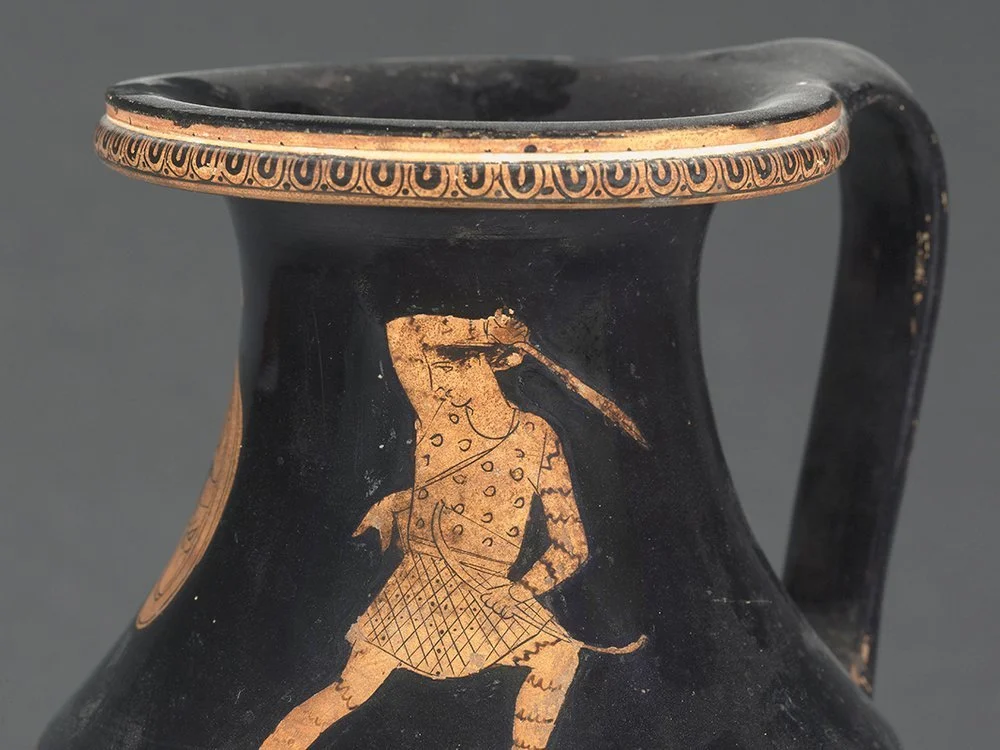
The Amazons of Greek folklore were a nation of exclusively female warriors hailing from the exotic lands east of Greece, the capitol of which was Themiscyra. They were the match of any of the Greek heroes, who the Greeks would often fight against in battle in order to prove themselves. The Amazons were one of the most common fixtures in both Greek folklore and Greek art, being featured on thousands upon thousands of vases and sculptures.
Famous Amazons included Queen Penthesilea, who led an army of Amazons to assist Troy against the Greek invasion, killing many Greek soldiers personally before being slain by Achilles and Ajax. There was Atalanta, who was raised in the wilds by a bear and could best any man in wrestling contests. She travelled with other Greek heroes to slay the fearsome giant Calydonian Boar that was sent by Artemis to rampage through the countryside in revenge against a king that failed to honor her. Atalanta succeeded in drawing first blood against the creature, winning the right to its pelt after it was slain. Another was Hippolyta, Queen of the Amazons and sister of Penthesilea. Herakles’ 9th labor was to sail to Themiscyra and take the belt of Hippolyta from her. Another story of Hippolyta was of Theseus kidnapping Hippolyta and forcing her to marry him, which caused the Amazons to attack and besiege Athens to rescue their queen, and most variations of the story end with Hippolyta being slain by Theseus during the Amazon attack. Some stories say it was her sister Antiope that was kidnapped, not Hippolyta.
You may be wondering why this section talks about the Amazon legends of Greek folklore instead of about the Scythians. For a long time, the stories of the Amazons were dismissed by historians and anthropologists as just folklore, but archaeological evidence over the last couple decades has shifted this narrative. As I talked about in other sections, archaeological evidence has shown that a great number of Scythian women fought in battle, up to a third of the entire female population in a given tribe. Many historians and anthropologists now believe that the Amazons were exaggerated stories of the Scythians. In ancient Greek culture, women were generally expected to be completely subservient to men, usually either their fathers or their husbands. Women were not allowed to compete in sports or learn the arts of war and women had very specific expectations set upon them regarding their place in society and what was acceptable behavior. So for there to be a nearby people, who often traded, fought, and interacted with the Greeks, who so blatantly went against all Greek expectations of how women should act really took over Greek imaginations. Scythian women were strong, competed in sports, fought in war, had tattoos, smoked pot and drank, and were in every way the equals of men. This stark contrast gripped Greek minds and would inspire the stories of the Amazons. Of course the stories of Penthesilea, Hippolyta, Atalanta and the other Amazons were just that; stories. But the Scythian women that inspired them were very much real.
There are many misconceptions regarding the Amazons and Scythians that stemmed from Greek myths. One of the most common myths that still perpetuate to this day was the idea that Amazons would remove one of their breasts so that they could shoot their bows better. This misconception has absolutely no archaeological evidence backing it. Furthermore, this would not help to shoot better, and the claim was first made by a single ancient historian in the fifth century BCE and was refuted by others at the time as well. Despite this, the myth has been perpetuated for nearly 2,500 years. There are others like this that likely stem from the ancient Greeks wanting to illustrate these Scythian women as ‘barbaric’ and incompatible with the more refined sensibilities of Greek women.
Mayor, Adrienne. The Amazons: Lives and Legends of Warrior Women across the Ancient World. Princeton, NJ: Princeton University Press, 2016.


